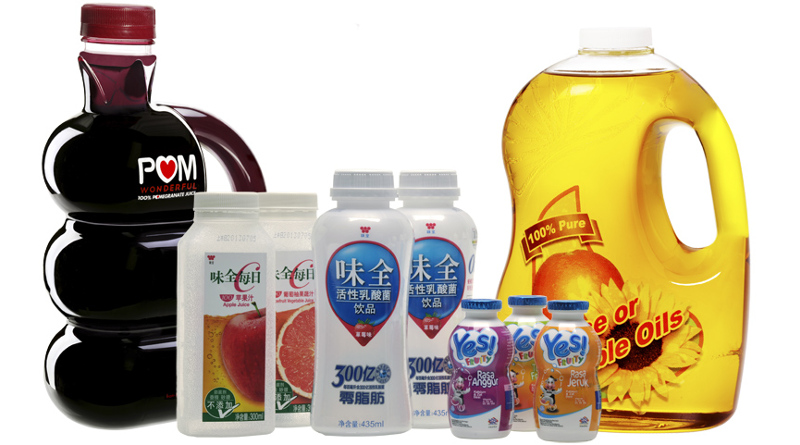Newly designed blow moulding machine for ecological packaging
Bekum, machine builder and specialist for extrusion blow moulded packaging, recently focused on the processing of recycling materials, calcium carbonate (chalk) and newly developed PET materials. With the “Concept 808” machine study presented at the K 2019 trade fair, Bekum heralds the future of the extrusion blow moulding machine with more energy-efficient extrusion and very fast production changes.
Over the past several years, Bekum has optimised their PET processing technology. The extrusion blow moulding of PET bottles integrating a true flow-through handle identifiable as #1 recyclable PET has long been a packaging goal for consumer products groups. By year’s end, a total of 16 Bekum Hyblow 407D and Hyblow 607D machines will be engaged in round-the-clock, fully automated production of handled bottles in fully #1 recyclable PET – this increases the total installation for this application to 40 machines in North America. Extensive extruder and feedscrew development has been carried out by Bekum to address the primary challenges of extruding high viscosity PET. The shear sensitivity of PET at higher throughput rates can drastically increase stock temperature and reduce parison hang strength. Also regrind presents a problem due to the differences in melting characteristics and bulk density of bottle/flash flake. Bekum’s Extrusion System development is claimed to result in consistent PET material throughput at acceptable stock temperatures when running up to 50% process regrind.
Fast production changes – 15 minutes for a mould change
The changing of blow moulds and, in particular, of multiple blow pins is complex and set-up procedures have a direct impact on the productivity of the plant. The magnetic quick-change system for blow moulding machines, available for the first time from Bekum, allows moulds to be changed in just 15 minutes per clamping unit – without the need for tools or special mould carriages. An integrated roller table, which is required in order to remove the moulds, only takes up a small amount of space. Moulds are inserted into and removed from the front of the machine, which means that there is no need to leave space at the sides of the machine for this purpose. Moulds can be transported using either a fork lift or a crane. All that is required is a magnetic mould platen back to be able to integrate existing moulds into the system. Electrical energy is only required for the clamping system during magnetisation and demagnetisation. The clamping function is guaranteed in the event of a power outage.

